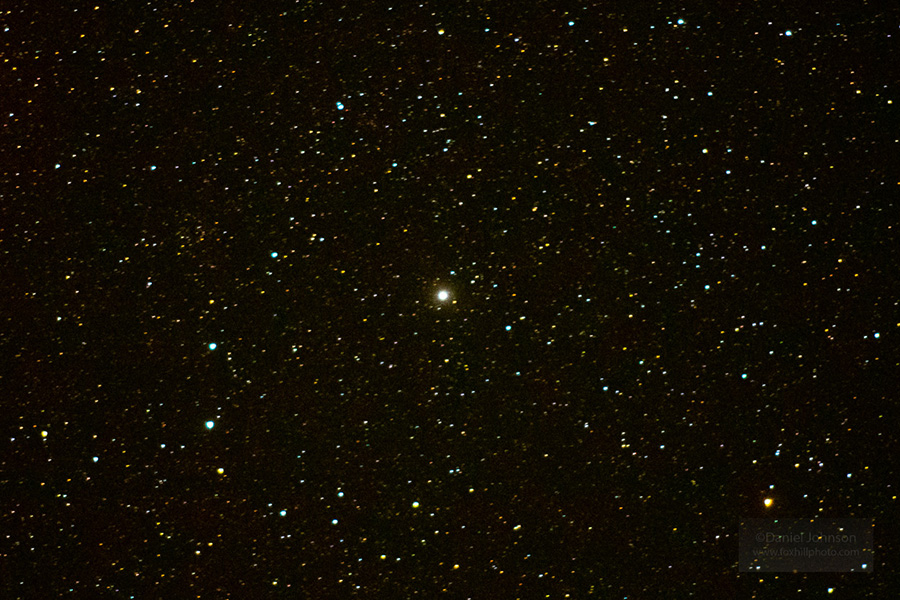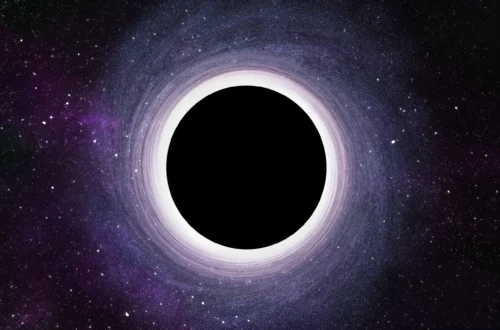I’ll never forget that warm July evening a few years back when I dragged my family out to a dark field away from the city lights. We lay on blankets, necks craned upward, and there it was—the Big Dipper, hanging like a cosmic ladle in the northwest sky. My kids giggled at how it looked ready to scoop up stars, and that simple sight turned into hours of stories about navigation and ancient myths. If you’ve ever wondered about those seven bright stars twinkling in the summer night, you’re in for a treat. This guide dives deep into the Big Dipper’s stars, why summer’s a prime time to see them, and how you can make your own memories under the stars. We’ll cover everything from basic facts to pro tips, all tailored for beginners and seasoned skywatchers alike in the Northern Hemisphere.
What Is the Big Dipper?
Think of the Big Dipper as nature’s most famous connect-the-dots puzzle in the sky—a pattern of seven stars that’s guided travelers, inspired legends, and sparked wonder for centuries. It’s not a full constellation but an asterism, a standout shape within the larger Ursa Major, the Great Bear. Visible year-round from northern latitudes, it shines especially bright in summer evenings, making it a go-to for casual stargazing.
Asterism vs. Constellation: Clearing the Confusion
An asterism like the Big Dipper is a recognizable star group that’s part of a bigger constellation, sort of like how the handle is just one piece of a spoon. Ursa Major boasts over 20 stars, but these seven steal the show. This distinction matters because it helps you spot other patterns nearby without getting lost in the stellar crowd.
Why It’s Called the Big Dipper
The name evokes a kitchen utensil, with a bowl and handle formed by the stars—perfect for “dipping” into the heavens. In other cultures, it’s a wagon, plough, or even a bear’s tail. Whatever you call it, its bold outline makes it one of the easiest sky features to pick out, especially on clear summer nights.
The Seven Stars of the Big Dipper
These aren’t just random twinkles; each star has its own story, from double systems to ancient names rooted in Arabic astronomy. Starting from the handle’s tip and moving to the bowl, let’s meet them one by one. I remember pointing them out to friends during a backyard barbecue, turning a casual glance upward into a mini astronomy lesson.
Alkaid: The Handle’s Fiery Tip
Alkaid, or Eta Ursae Majoris, shines as the brightest at the handle’s end, a hot blue-white giant about 100 light-years away. Its name means “the leader,” fitting for its standout glow. In summer, it’s a great starting point for tracing the Dipper’s shape.
Mizar and Alcor: The Dynamic Duo
Mizar (Zeta Ursae Majoris) pairs with fainter Alcor, a famous test of eyesight—ancient Arabs called it “the rider.” Mizar itself is a quadruple system, 78 light-years distant. Spotting both feels like uncovering a hidden gem on a starry night.
Alioth: The Bright Middle
Alioth (Epsilon Ursae Majoris) is the Dipper’s brightest overall, a white star 81 light-years away with a subtle wobble hinting at unseen companions. Its name, meaning “black horse,” adds a touch of mystery to your summer scans.
Megrez: The Faintest Link
Megrez (Delta Ursae Majoris) connects handle to bowl, the dimmest of the seven at magnitude 3.3, about 81 light-years out. It’s a steady white dwarf, often overlooked but crucial for the Dipper’s form—like the quiet friend holding the group together.
Phecda: The Bowl’s Thigh
Phecda (Gamma Ursae Majoris), or Phad, means “thigh” in Arabic, a rotating white star 84 light-years away. It spins so fast it’s egg-shaped, adding flair to the bowl’s lower left.
Merak: The Pointer’s Base
Merak (Beta Ursae Majoris) forms the bowl’s bottom, a white star 79 light-years distant. With Dubhe, it points to Polaris—handy for summer navigation when the Dipper’s high.
Dubhe: The Alpha Bear
Dubhe (Alpha Ursae Majoris) tops the bowl, a orange giant 124 light-years away, older and cooler than its mates. As a spectroscopic binary, it’s got a companion orbiting every 44 years.
Here’s a table summarizing the Big Dipper stars for quick reference:
| Star Name | Position | Magnitude | Distance (Light-Years) | Notable Fact |
|---|---|---|---|---|
| Alkaid | Handle Tip | 1.86 | 100 | Hottest, blue-white giant |
| Mizar | Handle Middle | 2.04 | 78 | Double with Alcor; quadruple system |
| Alioth | Handle Base | 1.77 | 81 | Brightest in Dipper; possible planets |
| Megrez | Bowl-Handle Junction | 3.31 | 81 | Faintest; white dwarf |
| Phecda | Bowl Bottom Left | 2.44 | 84 | Fast rotator; egg-shaped |
| Merak | Bowl Bottom Right | 2.37 | 79 | Pointer to Polaris |
| Dubhe | Bowl Top Right | 1.79 | 124 | Orange giant; binary |
- Pros of Studying These Stars: Each offers unique insights, like binaries for understanding gravity.
- Cons: Fainter ones like Megrez need dark skies, tricky near cities.
Comparing Mizar to Dubhe: One’s a youthful multiple system, the other an aging giant—youth vs. wisdom in stellar terms.
Visibility of the Big Dipper in the Summer Sky
Summer transforms the night sky into a canvas where the Big Dipper takes center stage, especially after sunset in the northwest. From June to August in the Northern Hemisphere, it’s high and prominent, dipping lower as the night wears on. In 2025, with clear forecasts, it’s pairing nicely with events like the Perseids.
Best Times to View in Summer 2025
Aim for 9-11 PM local time when it’s dark enough but the Dipper’s still overhead. August 2025 brings Mars nearby, low in the west, about as bright as Dipper stars— a fun contrast. Avoid full moons; new moon phases offer the blackest backdrops.
Position Changes Throughout the Season
Early summer sees the handle pointing up; by late August, it tilts westward. It never sets below the horizon north of 40° latitude, circling Polaris like a clock hand.
Factors Affecting Visibility
Light pollution dims fainter stars, so head rural. Weather-wise, summer’s humidity can haze views, but crisp nights post-rain are gold. Apps predict optimal windows.
How to Find and Observe the Big Dipper in Summer
Finding it is straightforward: Look north-northwest after dusk for the ladle shape. I once used it to impress campers by locating it blindfolded—practice makes perfect. Start with the bowl, then trace the handle.
Step-by-Step Guide for Beginners
Face north, scan for the four-star bowl with three-star handle arching away. If stuck, use the Pointers (Merak and Dubhe) to draw a line to Polaris. Summer’s long twilights mean waiting till 10 PM for full darkness.
Tools and Apps for Enhanced Viewing
Binoculars reveal Alcor beside Mizar; a telescope shows doubles. The Celestron SkyMaster 15×70 is great for wide fields—affordable at around $100. Apps like Stellarium or SkySafari plot real-time positions.
Where to Go for Prime Summer Viewing
Dark-sky sites like national parks—Cherry Springs in Pennsylvania or Big Bend in Texas. Navigational tip: Use Bortle scale maps to find low-pollution spots near you.
Pros and cons of summer viewing:
- Pros: Mild weather, longer nights for families; Dipper at peak height.
- Cons: Bugs, shorter true darkness compared to winter.
Comparison: Naked Eye vs. Binoculars
- Naked eye: Free, simple—sees the basic shape.
- Binoculars: Reveals doubles like Mizar-Alcor, but adds weight for hikes.
Best tools: Orion 10×50 binoculars for starters; shop at telescope.com or Amazon. For apps, SkyView Lite is free and user-friendly.
External link: NASA’s skywatching tips at science.nasa.gov/skywatching for monthly guides.
Internal link: Refer back to our star table for quick IDs.
Mythology and Cultural Stories of the Big Dipper
Legends breathe life into these stars—Greeks saw a bear chased by hunters, its tail the handle. Native Americans viewed it as a bear hunted by robins. In Hindu lore, the stars are seven sages, or Saptarishi, each with names like Kratu for Dubhe.
Greek and Roman Tales
Callisto, turned into a bear by jealous Hera, was placed in the sky by Zeus—Ursa Major. The elongated tail? A god’s stretch to fling her heavenward. It’s a reminder of human drama mirrored in the stars.
Indigenous and Eastern Perspectives
Many tribes see a bear with hunters; Chinese call it the Northern Dipper, a celestial chariot. These stories connect us across time, making summer gazes feel timeless.
Modern Cultural References
From flags (Alaska’s state flag features it) to songs, it’s woven into pop culture. Spotting it evokes that emotional pull of shared human wonder.
Using the Big Dipper for Navigation and More
Beyond beauty, it’s practical—Pointers lead to Polaris for true north. Sailors and hikers swear by it; I’ve used it on night walks to stay oriented.
Finding the North Star
Draw a line from Merak through Dubhe, extend five times the distance—bam, Polaris. In summer, with the Dipper high, it’s foolproof for latitude checks.
Locating Other Constellations
Arc from the handle to Arcturus in Boötes, then spike to Spica in Virgo. It’s like a celestial roadmap unfolding in the summer twilight.
Summer Sky Connections
Near Cassiopeia and Draco, it anchors the polar region. During Perseids in August 2025, meteors streak nearby, adding fireworks.
Bullet points for navigation tips:
- Align Pointers for north in under a minute.
- Use as a clock: Position tells rough time.
- Pair with compass apps for hybrid guidance.
People Also Ask: Common Questions About the Big Dipper in Summer
Pulling from popular searches, here’s what folks often query:
- Can you see the Big Dipper in summer? Absolutely, it’s at its highest in the evening sky during spring and summer in the Northern Hemisphere.
- Where is the Big Dipper in the summer sky? Look northwest after sunset; it appears high with the handle upward.
- What time is best to see the Big Dipper? Around 10 PM in mid-northern latitudes, when it’s dark and prominent.
- Is the Big Dipper visible year-round? Yes, in the north, but its position rotates seasonally.
- How does the Big Dipper change in summer? It’s upright and high, unlike winter’s upside-down view.
These address core curiosities, backed by reliable astronomy sources.
FAQ: Your Big Dipper Summer Queries Answered
What are the names of the Big Dipper stars?
Dubhe, Merak, Phecda, Megrez, Alioth, Mizar (with Alcor), and Alkaid—each with unique traits like distances and colors.
Why is the Big Dipper easier to see in summer?
Longer evenings and its high position make it stand out; plus, milder weather encourages outdoor viewing.
Can I see the Big Dipper from the Southern Hemisphere?
Rarely—it’s mostly a northern treat, dipping below the horizon south of the equator.
What’s the best app for finding the Big Dipper?
Stellarium or Night Sky—both free, with AR overlays for easy spotting.
Where can I buy binoculars for Big Dipper viewing?
Online at opticsplanet.com or local stores; Nikon Aculon 7×50 is a solid pick under $100.





